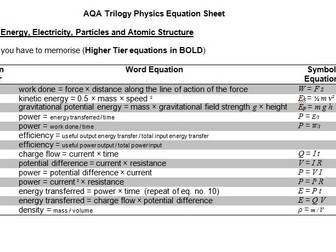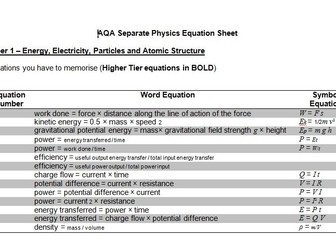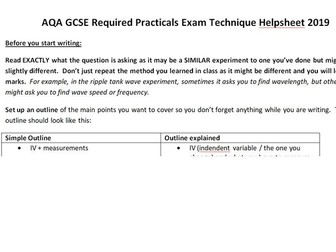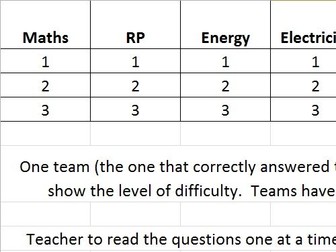
AQA GCSE Trilogy Physics Equation Sheet - Separated into Paper 1 and Paper 2 Equations by topic
Students are required to memorise 21 Physics equations in the new GCSE Trilogy specification. Students can find this very daunting so I separated the equations out into the equations they need to know for Paper 1 (Energy, Electricity, Particles and Atomic Structure) and Paper 2 (Forces, Waves and Magnetism and Electromagnetism) so that instead of having to memorise all 21 equations for each paper, they can just focus on 14 equations for Paper 1 and 13 equations for Paper 2 (note: some equations are used in both papers).
That way, since the Paper 1 and Paper 2 are likely to be a week apart, they can just focus on the equations relevant to their exams. This is especially important as the maths skills (including the use of equations) account for 30% of the marks in the Physics papers.
I have also separated out the equations for Paper 1 and 2 on the equation sheet that WILL BE GIVEN to them on the test, just to help them while they are revising and so they have an idea of which equations are likely to be relevant for each paper.



